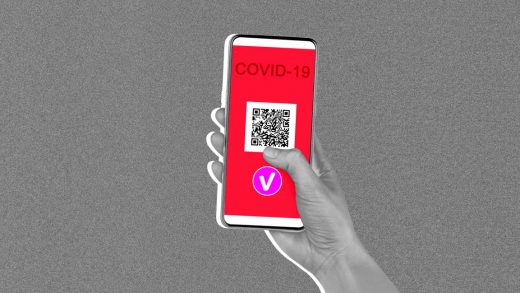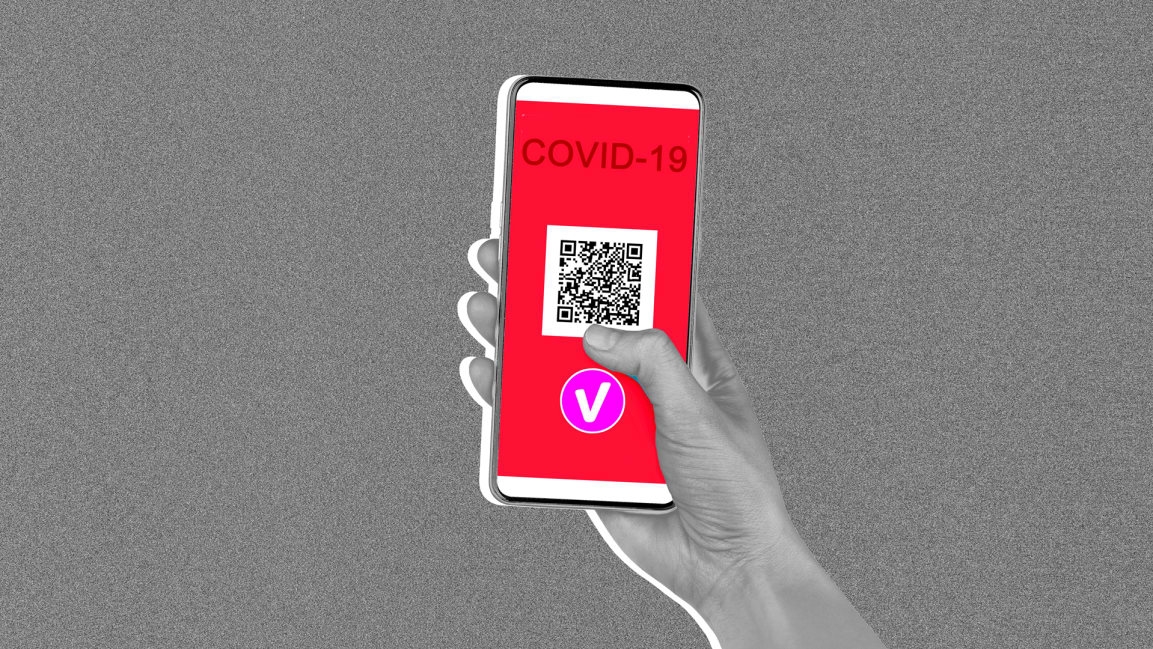I’m a doctor. The vaccine passport debate feels like déjà vu
Lately I’ve found myself experiencing flashbacks to exactly 12 years ago. For those of you in healthcare, maybe you’ve had similar déjà vu. The more I hear about the polarized discourse around vaccine passports, the more I realize: We’ve been here before.
The HITECH Act of 2009 catalyzed the digitization of America’s health records and widespread adoption of electronic health records (EHRs). With that came the promise of improved quality, safety, and efficiency in the way we deliver and experience care. But the promise fell short: We digitized in silos and without the end-user in mind, leaving complexity for patients and frustration for clinicians in its wake. Fast forward to today, and the vaccine passport offers a digital alternative to a paper record, designed to improve quality, safety, and efficiency as we seek to return to a normal life and navigate new variants. As these technologies roll out and more people use them for social engagements, we have a larger imperative to avoid making the same mistakes again.
In our initial digitization push, we overfocused on creating technology built to government specifications, resulting in a system that was never designed with the end user in mind. We also failed to align as an industry on how to share patient records, making access difficult for both the doctor and the patient. Our EHR-era mistakes—tech-centric design and industry fragmentation—entrenched healthcare as an inefficient system, focused foremost on sickness instead of patient wellness or clinician experience.
I experienced the consequences of our system’s fragmentation firsthand years ago when navigating my mother’s cancer diagnosis and treatment. Even as a physician, the process was a maze of complexity, from hospitals to specialists to the insurance company, and more. From both the physician and patient perspective, it became glaringly obvious: Our current digital framework puts tech at the center, not the patient.
Then, lockdown hit and fragmentation wasn’t an option. Everyone—providers, patients, payers, administrators, and more—had to find a way to digitally communicate, and focus shifted to the patient. The widespread adoption of new technology and care models was exciting. We realized the perks of virtual care, from reduced travel times to a lowered risk of waiting room disease transmissions. But we could also better pinpoint when an in-person visit was needed. We see now that patients want a hybrid-care experience that balances the human with the digital. Intuitively, we all know this: We as consumers want care that is easy to access, keeps us healthy, and is there for us when we get sick or injured.
Enter the vaccine passport. In the U.S., digital vaccine credentials are not mandated federally, and consumers and states will ultimately decide which—if any—applications stick. Regardless of how that plays out, the digital passports present a gateway to a broader conversation around what role the patient plays in the access, sharing, and control of their data.
In this moment, we have a chance to transition from delivering reactive healthcare to a proactive system of enabling health assurance—a system that empowers the entire healthcare workforce to support quality patient care while empowering consumers to share their health data, including their vaccination status, with whomever they choose through holistic design.
To pull this off, we have to go back to fundamental principles of open technology standards, empathetic design, and responsible technology. These three factors lay the foundation for an ecosystem that is safe and secure, whether for digital vaccine verification, health passes, telehealth, or other wellness-forward applications that personalize and engage patients in their health:
1. Open tech standards. To scale a verification system for people’s health or vaccination status, we need to ensure interoperability and consumer choice with an ecosystem of apps that lets consumers securely and easily share their status with whomever, whenever, and however they want. In this way, we could support a multitude of verification options. Each can be successful if they provide value to the consumer and end users.
2. Empathetic UX design. The ultimate goal of digital vaccine verification is to help make returning to normal life easier and feel more safe for everyone. Empathetic design means meeting the needs and behaviors of the people who will use these applications. We missed that boat with EHRs and have seen the harm it caused to provider-patient relationship.
3. Responsible technology. Healthcare’s digital transformation will hinge on consumer trust. Security, privacy, and consumer ownership of data are fundamental. Equally important to the conversation—including in the case of digital vaccine passports—is the role of technology in inequities. If digital vaccine verification is going to work, it has to work for everyone, no matter what device they’re carrying.
We all have a role to play in this great do-over of our EHR-era mistakes. We need to be proactive in how we rebuild our system to encourage open collaboration across the industry. Reaching a future where patients focus on their health and wellness, not their sickness, requires the industry to focus foremost on the patient, not on technology. If successful, the digital passport will serve as the turning point our industry needs to recommit to patient well being above all else.
Ashwini Zenooz, MD, is the president of Commure.
(35)



